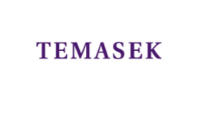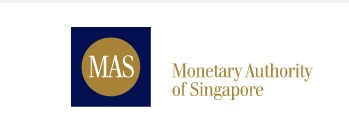Keynote Speech by Loh Boon Chye, CEO, SGX Group
Introduction
1. A very good morning to the OMFIF team and everyone here today. It is indeed SGX Group’s pleasure to host the OMFIF Asia Forum in Singapore again and thank you for this opportunity to speak.
2. We last hosted this forum back in 2019 and so many unprecedented and unexpected events have happened around the world in just three years.
3. Prakash has provided very useful perspectives into the macro environment and global economic outlook.
4. It was not too long ago when everyone was talking about lower-rates-for-longer; winds have since changed very quickly to higher-rates-for-longer. The global economic slowdown and persistently high inflation rates have become topmost concerns on the minds of global investors. 2022 is also said to be one of the worst years for institutional investors, surpassing the global financial crisis and the pandemic[1].
5. The newly launched OMFIF’s Global Public Pensions report offers deep insight into the investment plans of some of the most influential investors globally. The title of the report - “Flight to safety versus fight for returns” - cannot be more apt in describing the balancing act that investors face in the current environment.
6. In keeping with the forum’s focus on Asia’s role in this new generation, I would like to highlight three themes that I believe will drive capital flows now and into the near future.
Relook Asia
7. Firstly, Asia will continue to evolve and grow, and it would serve global investors well to constantly relook at this region as part of their portfolio strategy.
8. Asia remains a relativelybright spotin the global economy – and is also in asweet spotto benefit from investment flows. The region has a host of favourable factors and its diversity presents numerous growth opportunities across countries, asset classes and sectors.
9. In a separate OMFIF survey[2]earlier this year with reserves managers, Asia-Pacific was picked as the favoured destination for further investment. More than 33% planned to increase their allocations and exposure to this region. While this figure was a dip from last year, it was the highest proportion for any region.
10. Asia as a region is also complex with idiosyncratic risks. These risks have to be carefully managed but also capitalised on to achieve the returns that investors are seeking. Investors’ barbell strategy of “flight to safety” and “fight for returns” is what SGX Group is well-placed to support.
11. As Asia’s most international multi-asset exchange, we have built a marketplace that allows global investors to have seamless and unfettered access to almost 100% of Asia’s economies. Our trusted ecosystem, anchored in Asia’s only AAA-rated jurisdiction, has attracted global investors amid uncertain and volatile markets. This is reflected in the new highs achieved for our total derivatives daily average volume across asset classes this year.
12. The latest Global Public Pensions report has interestingly noted that global public funds are turning bearish and more defensive on China, amid concerns of market transparency, the regulatory environment and capital controls.
13. I, however, remain upbeat on the prospects of China. China remains hugely important and is expected to drive long-term growth, despite short-term headwinds.
14. A vast majority of the respondents continue to hold Chinese assets. This means that investors would still need to manage their risk exposures, even though they are increasingly pessimistic. Access across asset classes is important in navigating changes in such an investment landscape.
15. SGX is recognised globally as the one-stop, multi-asset platform to trade Chinese assets and manage risk comprehensively across equities, bonds, currencies and commodities.
16. Market participants can express their views through our pioneering SGX FTSE China A50 Futures or SGX USD/CNH Futures contract. These are the most liquid international benchmark for the China market and the most widely traded RMB futures respectively. Market participants can also invest through the world’s largest Chinese pure government bond ETF, listed on SGX, with AUM of about US$1.4 billion, or in a growing suite of China-focused ETFs.
17. Commodities are also a key investment proxy for the macro economy. With the world’s biggest marketplace for seaborne iron ore derivatives, our flagship iron ore contracts are used by market participants as a barometer of the Chinese economy.
18. Notably, SGX Group is a strong proponent of strategic partnerships to enhance connectivity with Chinese onshore marketplaces. Later this month, we will launch our two-way ETF link with Shenzhen Stock Exchange. This link is just one example of several that we have established between exchanges to bridge and increase capital market flows across borders for the markets in Asia.
Redefining capital flows
19. This brings me to my second theme on redefining capital flows.
20. In the current market environment, investors are actively managing their portfolios to both preserve capital and achieve returns. Deep liquidity is key in today’s volatile markets. As we speak to our customers, some have told us that choosing the right trading venue with deep liquidity is sometimes more important than the choice of trading instrument.
21. I believe that connecting and bridging different pools of liquidity, comprising diverse investor profiles, will deepen liquidity, enhance capital flows and in turn, increase investment opportunities.
22. A case in point is in FX, the largest and most liquid market in the world. Currency risk is a key consideration for investors amid uncertain and volatile market conditions. SGX has been working on better supporting the FX hedging and trading needs of OTC and futures participants with efficiency and liquidity.
23. Specifically, we are aggregating liquidity pools for OTC and futures participants via an integrated and scalable FX platform. We also recently launched an FX electronic communication network (ECN) that connects global participants anonymously to unique and deep OTC FX liquidity pools.
24. I believe this is the direction of travel for capital markets – the coming together of capital across venues, whether it is OTC and futures, or in the case of equities, across public and private markets.
25. The same principle can be seen in our commodities market where the coming together of physical and financial market participants has resulted in vibrant and liquid platforms for hedging and investment opportunities.
Reshaping transition finance
26. My third and final theme is none other than ESG and specifically, climate change. This is an area that investors cannot ignore. In the medium to long term, climate change is seen as global public funds’ most important concern, after inflation.
27. APAC accounts for half of global greenhouse-gas emissions, and many Asian countries are highly vulnerable to climate hazards. These economies will need significant financing to reduce emissions and adapt to the physical impact of climate change.
28. Government financing alone cannot meet the pressing climate financing needs. Mobilising private capital on a large scale will be necessary to achieve climate goals. However, financial markets alone is also insufficient. Instead, we need to consider how we can reshape transition finance by combining both public and private capital.
29. One opportunity lies in public institutions such as global public funds and sovereign wealth funds, as well as philanthropic entities, coming together to catalyse and crowd private capital to fund transition financing solutions. This provides the unique advantage of enhancing the risk-return profile by reducing investment risk and attracting greater funding.
30. This is already playing out in Singapore, a growing hub for family offices and foundations which have the capacity to do good given their long-term view and their flexibility in allocating resources. The Monetary Authority of Singapore (MAS) is working with private banks, family offices and foundations to crowd in philanthropic capital to attract a wider range of capital for this purpose. Across Asia-Pacific, 9 out of 10 family offices are involved in philanthropy, while about half have made sustainable investments in their portfolios.
31. SGX Group recognises its position at the centre of the market ecosystem and we are complementing these efforts, facilitating the flow of capital towards climate transition. By working closely with other stakeholders in the ecosystem, including index providers and institutional investors, we can drive capital flows by creating investment vehicles such as ETFs.
32. We continue to build a portfolio of sustainable and transition finance solutions across asset classes. As the leading international green bonds listing venue in Asia, we have today more than 360 green, social, sustainability and sustainability-linked (GSSS) bonds listed on our platforms. In the past year, almost 20% of all bond listings were GSSS bonds, with more than 50% of those from APAC in G3 currency listed on SGX.
33. On the index front, our subsidiary, Scientific Beta, has created Climate Impact Consistent Index, the only pure climate index offering on the market that allows investors to promote real-world emissions reductions. We also plan to launch products based on MSCI Climate Action Indexes, which covers companies that are taking concrete steps to reduce their carbon emissions. These complement our existing suite of low-carbon ETFs.
34. A credible carbon credits market and exchange is also necessary to support price discovery for carbon. Our joint venture, Climate Impact X (CIX), offers a global marketplace for quality voluntary carbon credits. Robust carbon pricing will lead to more investments in low-carbon projects, facilitate a more transparent market and support investors in making informed decisions.
35. According to the OMFIF report, the lack of relevant and accurate ESG data remains a key barrier for global public funds to further adopt ESG. On this note, I am pleased to highlight that together with MAS, we have worked with multiple stakeholders to launch an ESG data disclosure portal called SGX ESGenome. This portal allows companies to report ESG data in a structured and efficient manner, and for investors to access such data in a consistent and comparable format.
In conclusion
36. In closing, the only thing that is certain is the uncertainty that investors would continue to face in the foreseeable future. For global investors to stay the course, keeping to long-term investing principles will be crucial.
37. There is no better time for the public and private financial sector to gather and discuss the path ahead for global investments. I wish you all a fruitful conference. Thank you.
[1]https://www.ft.com/content/07324c3d-d7a5-4ef4-a724-33ce4625f67f























































First, please LoginComment After ~